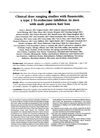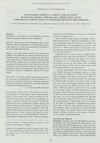TLDR Finasteride can cause side effects like liver issues and hormonal changes.
The chapter on "Finasteride Side Effects" from the book "Hair Transplant 360" discussed the various side effects associated with the use of finasteride, a medication commonly used to treat androgenetic alopecia. It highlighted the drug's mechanism of action, which involves the inhibition of dihydrotestosterone (DHT), a key factor in hair loss. The text also addressed concerns regarding potential impacts on liver enzymes and the risk of hepatic disorders. Additionally, it mentioned historical references to eunuchs to illustrate the effects of DHT suppression. The chapter aimed to inform hair-restoration surgeons about these side effects to better guide their patients.
 November 2020 in “Journal of The American Academy of Dermatology”
November 2020 in “Journal of The American Academy of Dermatology” Finasteride 1 mg every other month works as well as daily dose for hair loss maintenance.
June 2019 in “Journal of Drug Delivery and Therapeutics” Finasteride effectively treats hair loss and prostate issues with minimal side effects.
January 2013 in “China Medical Abstract of Dermatology” Finasteride effectively reduces acne with minimal side effects.
 12 citations
,
October 2004 in “PubMed”
12 citations
,
October 2004 in “PubMed” Finasteride, especially in a 1mg dose, effectively slows hair loss and improves hair growth in Japanese men with male pattern hair loss.
 10 citations
,
June 2001 in “PubMed”
10 citations
,
June 2001 in “PubMed” Finasteride is effective in growing hair and stopping hair loss in men with mild to moderate alopecia.
 46 citations
,
October 1999 in “Journal of The American Academy of Dermatology”
46 citations
,
October 1999 in “Journal of The American Academy of Dermatology” Finasteride effectively treats male pattern hair loss with a 1 mg daily dose.
 3 citations
,
October 1995 in “International Journal of Dermatology”
3 citations
,
October 1995 in “International Journal of Dermatology” Finasteride helps treat skin issues like acne and baldness by blocking testosterone conversion.





